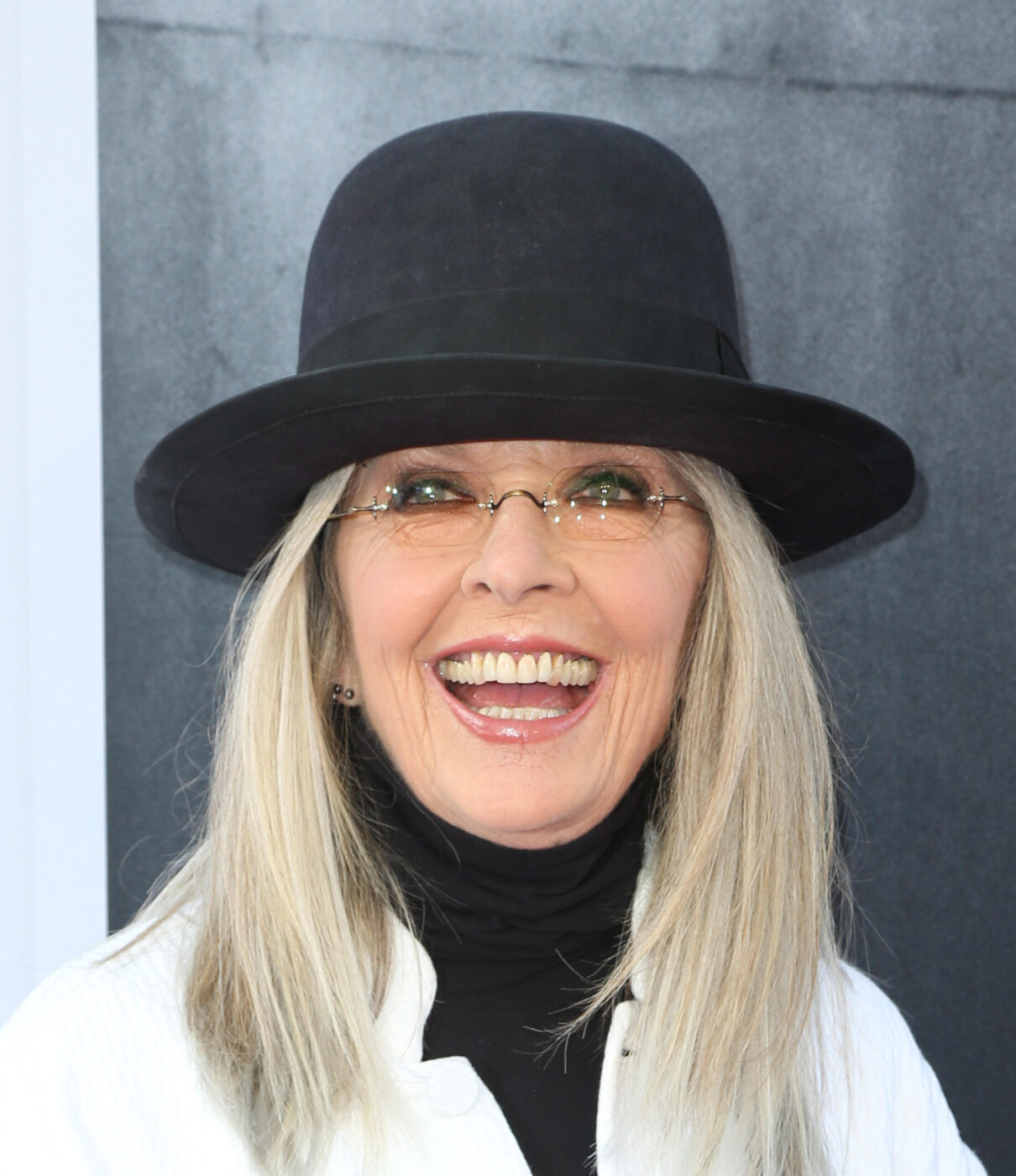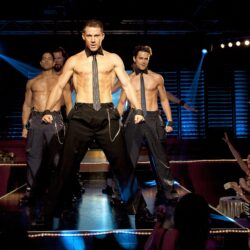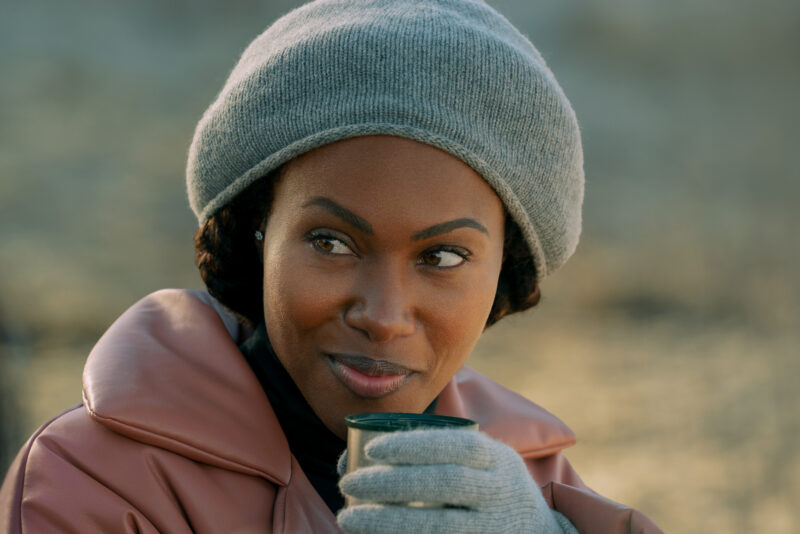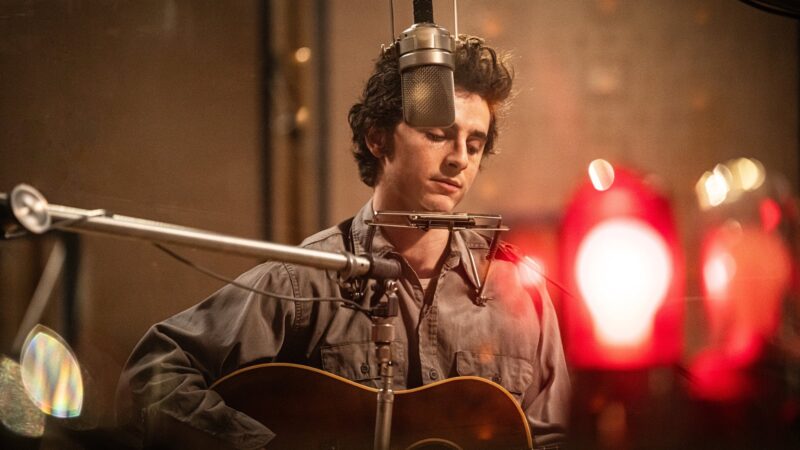You may not have watched her films. Or read her books. Or knew much about her early legendary roles.
But you definitely knew her style! From the bowler hat to the slim tie, the loose trousers and the overcoat: Diane Keaton wore menswear better than men. Her stylish signature –created offscreen and spilling into each and every one of her roles– was instantly recognizable long before the days of starlets seeking stylists for such. Keaton had no need. She was organic, foregoing falsified and fluffy looks for simple, straightforward suiting she wore in one variation or another every day –or at least every red carpet– of her 79 years. She was authentic, showcasing a strong wit and sharp mind that echoed the equally quirky ensembles she was celebrated for.
Ultimately, Keaton’s wardrobe was not artifice or sacrifice. She may have dressed like a man, but she was wholeheartedly a woman and celebrated her femininity. In an industry where starlets are glam one minute, casual the next, and trendy another, she maintained a remarkably consistent style throughout her 60-year career.
Since her titular role in 1977 as Annie Hall, menswear became synonymous with Keaton on and off screen. Woody Allen encouraged the actress to pour her authentic self into the characters wardrobe, and the control the actress enjoyed with costuming made fashion core to the film. When the movie came out, audiences went crazy for the story –and the style. Sophisticated. Structured. Soft. Strong. With fashion in the throes of crop tops, mini skirts, bell bottoms and bright colors, the layered, oversized, androgynous look was a breath of fresh air.
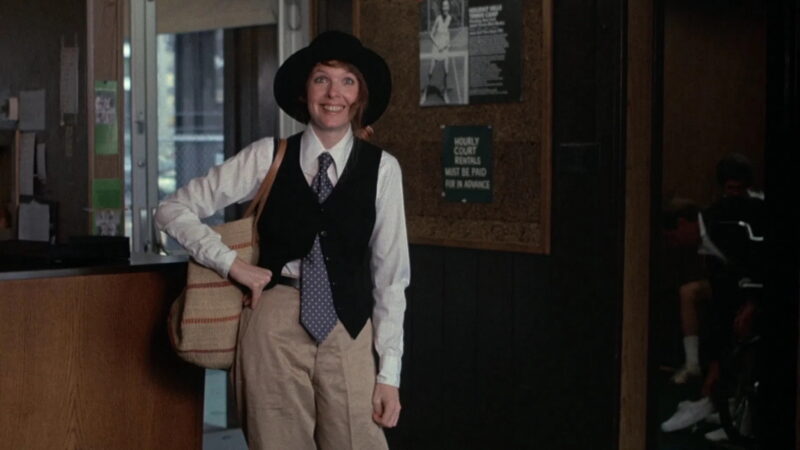
‘Annie Hall’ • Photo: United Artists.
The masculine energy of Keaton’s signature style juxtaposed her striking beauty and her stunning smile. Keaton’s entire aesthetic as a woman and an actress was ahead of its time. She was rivaled only by her self-proclaimed inspiration, Katharine Hepburn, in the complexity she brought to the conversation of femininity and fashion.
Her fashion influence was ubiquitous, but unlike her contemporaries, Keaton made no bones about it. For her entire career, she had no stylist. Fashion was her expression and not her identity. And her penchant for individuality meant she was hardly a staple, though she was surely a part of A-list fashion events. Friendships with the likes of Ralph Lauren meant constant access to the best, but she often preferred and highlighted thrifted pieces –a passion that was instilled and encouraged by her mother in childhood.
Ultimately, Keaton could afford to not follow fashion. After all, she was the trendsetter.
But was it drag?
Sure, her ensembles ticked all the boxes! Yet her style was not gender performance. On screen, on the red carpet or on an errand, Keaton dressed in structured pieces, yet remained sensual and flirty.
Was it a protest?
Perhaps. Maybe her singular focus on masculine pieces was not a mask, but a message about the duality of our nature, in style or sex or otherwise. As a non-traditional dresser, it makes sense she was a non-traditional lover and woman. For all her beauty, and all her admirers, Keaton never married and eventually adopted her son and daughter as a single mom in her 50s. But her love of fashion appears to be just that: Love and not an act of war against masculinity or a march for femininity.
Was it protection?
She answered the question directly in an excerpt from her book, Fashion First, published just last year by Rizzoli. “There are so many wonderful things to love about a suit,” she wrote. “The pants don’t have to be too tight. Neither does the jacket. I like my sleeves to go down long, to cover me up. Suits make me feel comfortable.”
And like a true fashionista, she never sacrificed style for comfort. The pieces draped and shaped a physique that could have easily worn the sultriest skin baring gown –but didn’t. Her cozy hats and functional glasses should have made her look dowdy –but didn’t. And her life, so brief, yet so bold, showed women that we can be many things at the same time, including eccentric and elegant. News of her death a few days ago has left old fans reeling, and younger audiences who may not have known her, curious.
One simple Google search and you understand the mystique: Keaton was a woman in full without dressing like a woman at all. Hollywood is mourning, as it should. And applauding too. Keaton’s legacy is the greatest act she ever pulled: to be a queen of fashion, a king of drag and a legend in cinema –without really trying.
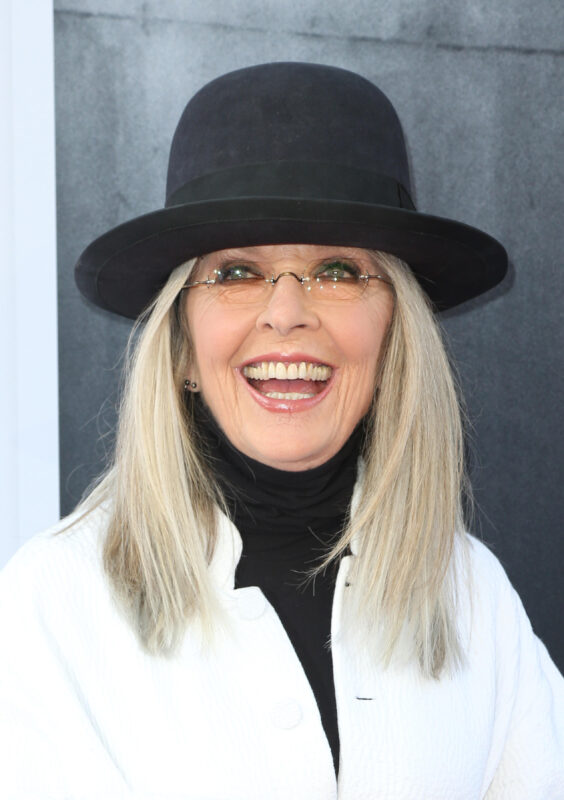
Diane Keaton • Photo: MediaPunch/Alamy.

